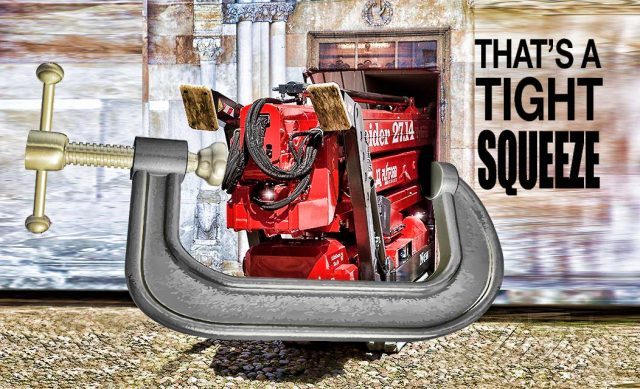Is renting a MEWP your best option?
25 June 2017
Tips For Renting A MEWP
So you’ve got a few jobs that really need a powered access platform to do safely and efficiently. You’ve looked at the cost of buying, both new and second hand, but the company isn’t quite ready yet for that leap into a big capital purchase. It’s a decision that can’t be rushed into but renting a MEWP quickly to get the next few jobs done.
At this stage, many companies, especially smaller firms, find it more cost effective to rent powered access platforms rather than investing in their own equipment.
Finding a reliable and reputable hire firm is essential to make sure that you have the right access equipment for your job and that the machines you hire are functioning to the highest standards possible.
There are a few useful things to consider when deciding to hire powered access platforms which will help you find the right equipment from the right supplier.
Health and Safety
This is the most important consideration when renting access platforms. It is the responsibility of the person who is going to use access equipment to ensure that all users are fully trained. This is a legal requirement and is in place to avoid serious accidents or even death. Common accidents covered by training include falls from the basket, items dropped from a height and over-tipping. A reputable hire company will either be able to provide this training or direct you to a suitable independent training firm.
Servicing and Maintenance
Most rented equipment is not brand new and will be used by multiple companies in its rental lifetime. This makes it even more important to ensure that all used access equipment has been fully serviced and maintained and meets all the required safety standards. Ask your hire company to show you details of the servicing and who has worked on it.
Job specifics
Before you hire a powered access platform, you need to know the specifics of the job to make sure you are renting the right equipment. This may include location, the height of the job, access to the site, obstacles that need to be overcome, and the number of people or type of equipment that need to be lifted to the required height. If you are unsure about what you need then speak to your hire company as they will be able to advise you on choosing the right equipment and any health and safety requirements
Ground conditions
A full risk assessment should be carried out before starting any job and this should include details of the relevant ground conditions. The strength and type of ground surface vary depending on location and even the weather but is very important to the stability of access equipment. Many powered access platforms are able to stabilize on steep gradients though some fragile floors may need extra assistance. If you are concerned, ask your rental firm if they can rent or recommend spreader plates which will spread the pressure load and increase safety.
Hiring a powered access platform is cost effective for smaller firms or for private use and can save money on storage, maintenance and the other outgoings associated with owning a powered access platform. It is important to find a good hire firm that can provide quality equipment and advice to help your needs. Your hire firm should support you to make the right choice of access platform and comply with health and safety demands so you can get your job completed quickly, safely and with confidence.
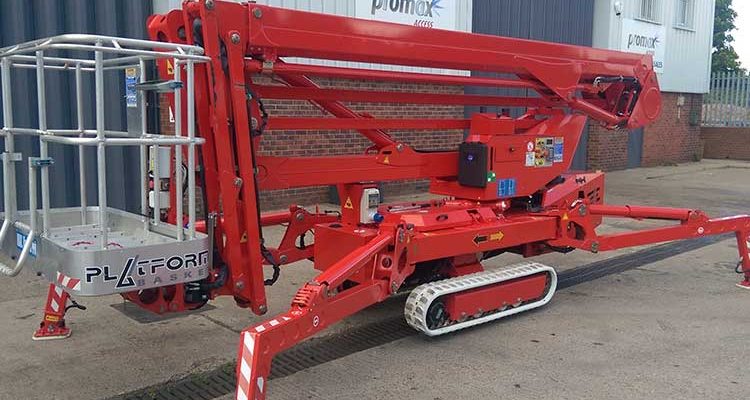
How To Buy A budget MEWP
18 June 2017
Buying a budget MEWP may be best
We would all like to buy a new car – the latest model with sexy looks, serious gizmos and enough room for the whole family including dogs, ponies and the occasional kitchen sink. Sometimes, however, the budget doesn’t quite stretch that far and we need to cut our coat according to our cloth.
It’s the same with the decision to buy a powered access platform. Perhaps initially your workload has only demanded you renting a MEWP when necessary. Then your workload increases and rental costs start to bite into your profits and that old question “to buy or not to buy” raises its head again.
A shiny new machine is tempting – look at all the catalogues, visit the showrooms, compare the costs. It’s a big investment. Perfect if you have the money available. But sometimes cash flow and budget enter the scenario. But at least you can get an idea of what you need for your business. Research the right type of budget MEWP for your specific needs, one that will do the majority of the work that you currently hire a machine for. Then start to shop around.
Fortunately, there is a thriving market for quality, pre-owned access equipment which is available at a reduced price.
Buying used access equipment can be an affordable solution for a business that has regular and multiple jobs at height. It is an investment that over time will pay for itself by saving on rental costs and any time lost by using traditional climbing methods such as ladders or scaffolding.
If you are buying second hand then it’s important to make sure to know the history of a powered access platform. Used budget MEWPS are sold by many rental and retail firms and there are a few things to look out for:
• Age – Find out how old the powered access platform is to make sure it is still possible to get parts and servicing.
• History – Ask who the previous owners were and what the equipment has previously been used for as this could affect wear and tear.
• Model – Spend time researching the right platform for specific tasks. For example, vehicle mounted access platforms offer ease of mobility, or a spider lift is suitable for work in tight spaces.
• Servicing and maintenance – It is important to find out when and who has inspected equipment over its lifetime and that there is proof that it complies with current safety legislation. Also ask about the credentials of whoever has done the work to make sure they are fully trained and experienced.
• LOLER Certified – Ensure it has been thoroughly examined and a new certificate issued
• Storage and insurance – Always consider the additional costs of owning an expensive piece of equipment. Find out what the legal requirements are with regard to servicing and make sure there is a secure place to store the platform when it is not in use.
Even after these considerations, it may still be the case that renting powered access platforms offers the best value for money and flexibility for a smaller business. However, pre-owned access platforms offer value for money and can be more cost-effective in the long term if the number of jobs at height increases.
Reputable suppliers will ensure they are acquired from reputable sources, fully serviced and inspected so they provide maximum efficiency at a more affordable price. Ask the right questions and make an informed decision.
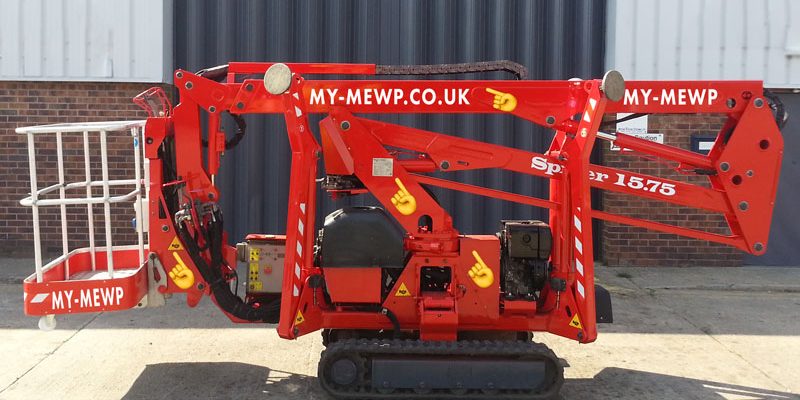
Buying A MEWP Or Renting A MEWP
11 June 2017
Buying MEWP Or Renting A MEWP?
Powered access platforms are efficient, safe and can cut time and costs for most jobs at height but investing in plant is a big decision for many companies. Depending on the size of your job and your business needs, there are pros and cons to buying a MEWP or choosing to rent individual machines on a job-by-job basis.
Obviously, some financial analysis is needed before a decision can be made to purchase. It may be prudent to start by renting on a job-by-job basis, but if you’re renting requirement starts to increase over time and it eats into your job-by-job profit, it’s time to start considering your options.
Buying A MEWP
Buying a MEWP is a definite bonus to growing companies that have multiple and regular jobs at height.
The number one benefit that may tip the balance in favour of buying a MEWP could be saving tax. In the UK you can deduct all or some of the value of the item from your profits before you pay tax. Talk to your accountant about Capital Allowances and check out the Government website. Additionally, Capital Equipment Assets and their depreciation can improve the company Balance Sheet.
Other benefits why buying may be the best choice for your business:
Branding – owning your own equipment means you can brand with your company logo which could be important if you want to attract new customers or if you are a public service organisation.
Saving money long term – If you do a lot of jobs at height then renting equipment can be costly and it makes financial sense to own the necessary access platforms. Look back over your previous year’s trading and do the sums
Training – Larger firms can train multiple staff to use the equipment which is good for business and enables firms to have job flexibility.
Some companies can be put off by the initial cost of buying a powered access platform but there are other options to consider:
Used access platforms – Quality, pre-owned access equipment can be bought for a reduced price.
Service history – Reputable suppliers will ensure they are acquired from reputable sources, fully serviced and inspected.
Finance options – Some suppliers offer finance plans for customers to help them buy the plant they need. Look for accredited lending schemes with payment options including hire purchase, leases and contract hire. Again, there could be tax benefits under such an arrangement.
Renting A MEWP
Not every user of a powered access platform is a larger company with multiple jobs at height so for private jobs and one-off tasks then renting may be a better option.
Cost effective – Renting saves money on the costs of keeping and running a large powered access vehicle that is not in use for a lot of the time.
Servicing and maintenance – The costs of servicing and maintenance can be saved as they are the responsibility of the rental firm. This means the equipment is always security checked and safe to use, with the relevant documentation. Users still need to be trained in the use of both powered access equipment and the model of lift used, even if it is for a private job.
Storage – Some powered access platforms are large and need a lot of storage space that could be difficult to find. Not everyone has room for a road towable boom lift in their garage!
Summary
There are pros and cons to renting and buying powered access equipment and the right choice will depend on your individual needs. The issues are still the same when considering what is right for your business: tax breaks, value for money, safety and servicing, and storage.
Tip…
Make sure you are choosing the right tools for the job before you sign a contract and that anyone using it is fully trained and take these things into account when making your investment. Look for any “hidden” costs you may not have thought off.
MEWP Stability Problems
4 June 2017
Eradicating MEWP Stability Problems
Powered access platforms are designed to be strong and stable on a wide range of floors and spaces, on and off site, but tip overs are still the most common type of accident. However, these dangerous and expensive incidents can be avoided as there are two main factors which can prevent MEWP stability problems:
i) knowing how to use the equipment properly and
ii) carefully assessing surface they are used on.
Stabilising the Mobile Elevated Work Platform
MEWPs use various methods to stabilise on uneven ground – some spider lifts have adjustable legs that can be set up in different positions and on different levels, whilst all-terrain vehicles can be set up on severely sloping gradients.
Key points to remember:
• Each machine has benefits and limitations so it is essential to be familiar with the specifics and only operate the machine within the manufacturer’s recommendations.
• Inspect the machinery to make sure it is fit for use and ensure operators are fully trained (this is a legal requirement).
• Look out for the warning lights on the control panel. This will tell the operator if the machine is not level.
• Outriggers generate high pressure at the feet which may not be supported by many areas of soil or unmade ground and even some paved areas, so additional foundations may be required. A site survey and risk assessment will highlight potential MEWP stability problems.
Checking the Ground
Ground conditions have a big impact on the stability of MEWPs and as part of the risk assessment, a ground survey should be completed before every job. Poor conditions may mean further support is required such as spreader plates, timber mats or concrete pads.
Consider these when completing a ground survey:
• The weather has a big impact on outdoor ground conditions, in particular, rain and ground that has thawed after an overnight frost. Regular checks should be made as conditions are changeable.
• Paved areas, such as footpaths, may look strong but could have weaker ground or shallow services underneath.
• Roads in estates and residential areas may be less durable than those designed for commercial vehicles.
• Avoid the edge of trenches and other excavations as these may collapse without warning.
• Indoor spaces should be properly surveyed as floors, cellars and basements are often unable to take the necessary weight.
• Underground services such as sewers, drains, manholes, gas and water mains might be damaged by the weight or could even collapse.
Summary
MEWPs can be stabilised and perform safely and effectively on most surfaces and gradients provided a few basic things are taken into consideration. Make sure operatives know how to use the individual machine and what it is capable of. This applies to both road towable and vehicle mounted platforms. Assess the ground conditions to be worked on to ensure the machine can be used to its optimum performance. This will prevent avoidable tip overs or subsidence accidents that can put lives at risk.
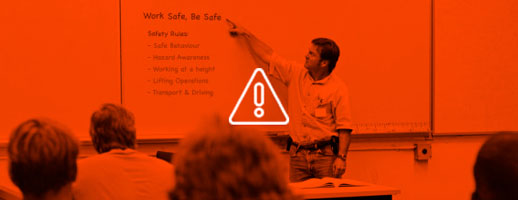
Get Training For MEWPS. It’s The Law!
21 May 2017
Employers and individual users are liable
Whilst powered access platforms make working at height safer, quicker and more efficient, it must be remembered that employers or individual users are liable if the people in charge of the machinery are not properly trained.
Health and safety legislation and work at height regulations make training for MEWPs compulsory. Anyone working with the equipment needs to know how to inspect it, to operate it safely, and to recognise and avoid any potential hazards. As well as this general training, they should also be given familiarisation training on the specific model that they will be working with.
Who is responsible for training?
Employers and individual users must make sure operators are properly trained. Rental companies are also obliged to direct their clients to appropriate training if they don’t deliver it themselves.
There are courses available for:
• Operators
• Demonstrators
• Instructors
What’s the MEWP training about?
Training for MEWPS is a combination of classroom based study and hands-on experience with the equipment and includes:
• Industry regulations and standards
• Choosing the right platform for the job
• Carrying out workplace inspections
• Operation of the powered access platform including demonstrated proficiency in all functions of the equipment
• How to recognise and avoid common hazards
• Operator warnings and instructions
• The purpose and use of manuals
• Carrying out a pre-start inspection
• Factors affecting stability
• Personal protective equipment
• General equipment components
• Safe use of equipment
• Understanding issues associated with larger machines: e.g. outriggers/stabilizers, extendable axles, envelope management systems, load-movement devices, dual capacity
Specific Training For MEWPS
Training for MEWPS can be tailored to the individual requirements of your business. The MEWP training can cover specific categories of Mobile Elevated Work Platforms (MEWP) such as:
• Static Vertical (1a)
• Static Boom (1b)
• Mobile Vertical (3a)
• Mobile Boom (3b)
• Insulated Aerial Device (IAD)
• Specialist machines (SPECIAL)
Accredited training centres are located across the country and courses can be held at their premises, or on a convenient site with suitable facilities. Promax Access offer a wide range of training courses for working at height. Please call to discuss your particular access platform training requirements.
Where To Find Out More About Working At Height Training
In 2010, aerial work platform industry professionals published ‘The Statement of Best Practices of General Training and Familiarization for Aerial Work Platform Equipment.’ This document sets out the obligations and requirements of those responsible for delivering, arranging and receiving training in the use of powered access platforms and is essential reading for anyone planning a job at height with powered access platforms.
Summary
Powered access platforms have many benefits for working at height but there is a legal obligation to make sure they are used safely and properly. Training for MEWPS is not only a legal requirement but jobs can be completed more efficiently if everyone involved knows how to use the equipment properly. With professional training dangerous and costly accidents can be avoided.
Spider Platform – That’s a Tight Squeeze
14 May 2017
Why A Spider Platform?

Not all jobs that require a spider platform are located outdoors or in open spaces. Some, such as interiors, gardens or courtyards are in very confined spaces. Working at height in unusual spaces pose a number of challenges for
professional teams.
In addition to the usual safety concerns for the workforce, it can be complicated to get the necessary equipment to the work area, let alone set it up and start using it. A spider platform often needs to be transported through a tight space and set up, taking care not to damage the surrounding environment and making sure the machine is fully operational and safe despite these additional limitations.
Our spider platform range has been specially designed to work in areas that are inaccessible to other powered access platforms and to provide maximum functionality, indoors or in tight spaces.
The name comes from the shape of the stabilizer legs which fold up to enable the lift to be used in narrow spaces and to pass through standard width doorways or gateways which would be problematic for other types of lift. This clever design does not mean a compromise on the overall functionality of the lift as they are still able to safely reach significant heights, and have strength and stability on uneven and sloping surfaces.
Spider lifts can be used indoors or outdoors on all terrain but have a number of features which make them particularly useful for jobs indoors or in more delicate areas. These include:
• A tracked chassis to spread the weight of the lift over a larger area and reduce the ground bearing pressure, preventing damage to fragile floors or pathways.
• Electric motor power option for indoor use which reduces operational noise.
• Not only lower overall weight than other types of access platforms but also no reduced functionality.
• Easy to transport as most are road towable.
• Radio control options for use in tight space.
The narrow design and low ground pressure make them flexible and reliable on delicate surfaces, both indoors and outdoors. The spider platform legs can even be set up in different positions on different ground levels meaning the machines can be used in compact spaces where other lifts are unable to work.
Spider lifts are the least disruptive type of powered access platform making them flexible and adaptable for a range of unique and specific jobs. They have reduced noise, flexible access and can be used on most surfaces without compromising safety, functionality or causing damage to more delicate surfaces, even in the most unusual spaces.
See our full range of Spider platforms, please see our tracked spider lift access platform page which has all the information you will need.
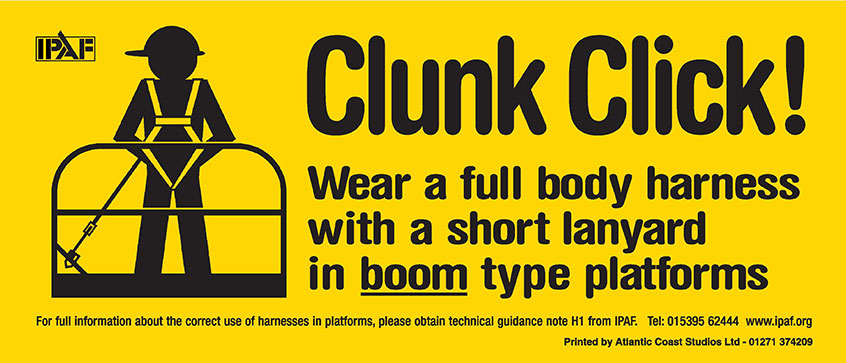
MEWP Boom Type Safety
7 May 2017
On a MEWP boom-type, safety is a concern to anyone working at height with these types of access platforms.
However, for the occupants of the basket in a boom-type MEWP, there is a real risk of serious injury or death from being catapulted out of the basket. They may not be in any position to avoid violent movement of the basket. But the correct use of a harness can prevent them from being thrown out.
How the catapult effect happens On A Boom-Type MEWP
If the boom swings, jolts or tilts away from the machine’s centre of gravity, then the basket and its occupant(s) can be placed at risk. Other causes can be an impact from other vehicles or snagging the boom or basket on obstructions. Or it may be if the operator overreaches (usually by standing on the guard rails). All these factors can affect safety on MEWP boom-type equipment;
• Even a small movement at ground level will create a whiplash effect at platform level.
• The higher you are, the faster you will be thrown forwards – or sideways – or backwards.
• In the event of an accident, the platform might tilt – providing less protection than you think.
MEWP boom-type Safety
When working from a boom type MEWP (mobile elevated work platform), it is strongly recommended that a full-body harness with an adjustable lanyard be used to provide work restraint. The lanyard should be adjusted to be as short as possible and may contain an energy absorbing device.
This includes Static Booms and Mobile Booms.
The use of personal fall prevention equipment
Where there is a risk of impact or someone falling from a boom type MEWP, those people should wear appropriate fall prevention equipment.
The preferred option is to stop the person falling from the work platform by using a work restraint system. A work restraint system will consist of a full-body harness (BS EN 361) connected to a lanyard (BS EN 354) which connects to an anchor point on the MEWP basket. From the anchor point, the lanyard length will be short enough to prevent a person from reaching a position where they could fall. The lanyard may contain an energy-absorbing device (BS EN 355), but will still only be in use as part of a work restraint system.
Do not use retractable type fall arresters (BS EN 360) unless they are suitable and have been specifically tested.
Suitable harnesses and lanyards for boom type MEWP safety
British Standards safety equipment may be bought online and delivered the next day. It is also worth downloading and reading what the “Work at Height Safety Association” have to say in their Technical Guidance Note 4 “Guidance on the use of single and twin energy-absorbing lanyards”. It can be downloaded here.
The Clunk Click Campaign
Clunk Click is a worldwide campaign for all users of boom type platforms. It encourages operators to wear a full-body harness and also a short lanyard.
It was started in the UK by the Powered Access Interest Group (PAIG). PAIG are a joint committee that includes, not only the Construction Plant-hire Association but also the International Powered Access Federation.
Clunk Click stickers for boom type MEWP safety can be ordered by calling +44 (0)1271 374209. Artwork can also be obtained from IPAF on +44 (0)15395 66700.
Be safe at height. It’s your life.
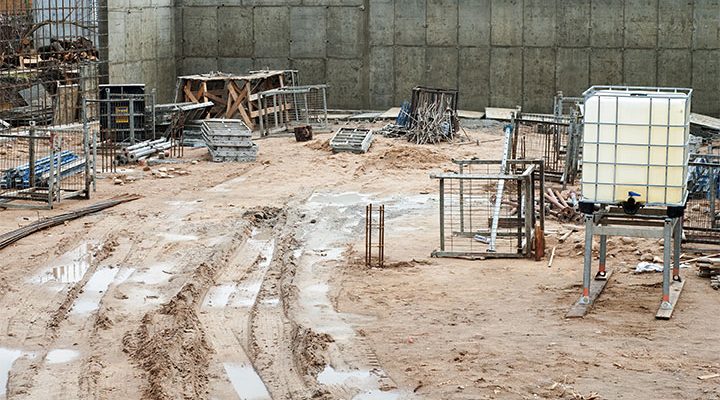
The Duke of Wellington was one of Britain’s finest generals. His success in India, Spain and Europe was down to one thing: reconnoitering the ground. This was so important to him he carried out much of it himself. Seeing the ground with his own eyes allowed him to plan for troop and artillery placement, to check on the ground conditions, and allow quick access to areas when needed.
In effect, he did his own ‘risk assessment’ before each battle. He would have made the perfect MEWP team manager.
The route to site
There are many factors to take into account when planning to use powered access platforms. To ensure their safe and effective use, good decisions need to be based on understanding where and how they are to be used. The best way to identify the hazards is to travel beforehand – to reconnoiter – the route the MEWP will take. From where the MEWP is stored to the site entrance needs to be seen and the most suitable method of transport chosen. If on a trailer, a safe area needs to be designated for unloading. Accidents can and do, happen at this stage.
Accessing the site
When planning the job, factor in separate or designated areas of movement for workers on the ground and the access equipment. This should include:
– Separate entrances and exits
– Pedestrian walkways through the work area
– Crossing points which are clearly signed and lit where there is a crossover between access equipment and pedestrians
– Room to reverse or make a three point turn
– Visibility is paramount when moving machines around and vehicles should have large, clean windscreens and external mirrors to provide an all-round field of vision.
Ground Surfaces
If it has recently rained then reconnoitering the ground is essential to assess the risk. Soft surfaces can make maneuverability difficult, particularly when the ground has become muddy and churned up or if you are working on different surface types such as sand, ice or fragile indoor floors. Check the condition of surfaces in all of the work areas and in between and factor in the machine weight as, in some cases, a tracked access platform might be required.
- The Health and Safety Executive’s Five Steps to risk assessment
Viewing beforehand the route the MEWP will be taking from the start of its journey to the work placement will make the HSE “5 Steps” easier to assess.
Seeing with your own eyes will help:
- Step 1: Identify the hazards.
- Step 2: Decide who might be harmed and how.
- Step 3: Evaluate the risks and decide on precautions.
- Step 4: Record your findings and implement them.
- Step 5: Review your risk assessment and update if necessary.
Take a tip from the Duke of Wellington – do your own reconnoitre and assess the risks when deploying your MEWPs.
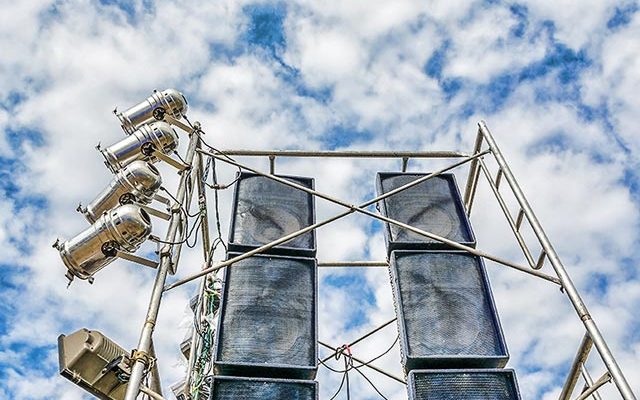
Springtime Powered Access Platforms
23 April 2017
In the UK spring has sprung and summer is lurking somewhere around the corner. Across the country fetes, festivals and exhibitions are being planned and springtime powered access platforms have made staging outdoor events much easier.
Local fetes, musical festivals in local parks, street carnivals and road races often need springtime powered access platforms that are flexible, mobile and able to operate safely on a wide range of surfaces and ground conditions.
Their flexibility allows a variety of jobs to be done
– Putting up bunting, street lighting and decorations
– Stage construction including roofing, lifting steelwork and maintenance
– Setting up and taking down lighting rigs, lasers and pyrotechnics
– Working on sound equipment
– Fixing and operating film and television cameras for broadcast
– Maintenance during the event and site clearance afterwards
Springtime powered access platforms do the job
MEWPs are versatile and there is a model or type suitable for most locations, indoors and outdoors. When selecting the type needed, think about the following:
– The work to be done and height and outreach needed
– The ground conditions and any supporting structure
– The terrain and any gradients
– Access to the site and the work location
– Any overhead hazards, e.g. power cables
– How many people will be needed
– The safe working load of the machine
– Are any materials handling devices needed
– Any other traffic on site including pedestrians
– Fuel allowed on site and where refuelling will take place
Springtime powered access platforms safety essentials
The same safety rules apply to access platform users regardless of whether it’s a private or public event. By law, all operatives should be fully trained to use powered access platforms and familiarised with the specific machine they are using.
A full and detailed risk assessment needs to be carried out to identify any hazards in the work area and surrounding site. The fun event is for everyone and should not be marred by risk taking and serious accidents. Often at outdoor events, the work needs to be carried out while the event is going on and there are thousands of people around. When used properly, access equipment is one of the safest ways to work up in the air, at speed. However, be sure to create a safe working area so neither operatives or members of the public are at risk.
Check the weather forecast – it can snow in Spring! Wind. Rain and mud are all potential problems. Be prepared and select the right equipment for the job – including personal fall protection.
Outdoor festivals in the UK are hugely popular, often attracting thousands of people. Springtime powered access platforms play a key role in making them a success. For flexibility, stability and safety they are the best choice for working at height for anyone planning an outstanding summer event. Get out the brolly and the sun cream and let’s all have some fun.
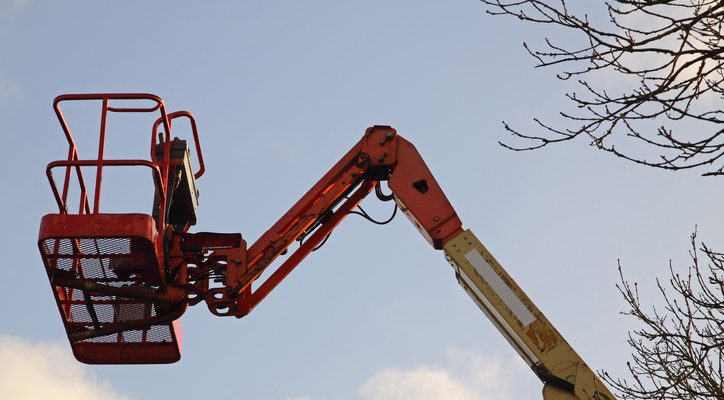
Powered Access Platforms – The Ups and Downs
9 April 2017
Safer and more productive, but…
There’s no doubt that the use of Powered Access Platforms can make the workplace safer and more productive. However, there are also dangers and pitfalls that need to be considered – especially the legal duties placed upon owners and users.
The Ups…
Tree work
The risks of working at height accidents are reduced when using powered access platforms (Or MEWPs – Mobile Elevating Work Platforms as they are commonly known). When used for tree work they are faster to use than conventional ladders and ropes. They enable quick access to those awkward to reach branches and are less tiring for the operators. More work gets done throughout the week and the operators are less tired and thus the risk of accidents through fatigue is reduced.
Construction
Power Access Platforms are a great alternative to scaffolding. They provide easy access to those small but essential jobs high on roofs or ceilings that previously could only be accessed by erecting scaffolding. If the work involved is a routine inspection or small maintenance, the cost and inconvenience of erecting scaffolding can be prohibitive. They are also ideal for those small, “one off” jobs.
Indoor Working and Accessibility
Boom lifts with strong stabiliser legs and spreader plates reduce the pressure point between outriggers and the ground and can operate without damaging floors or delicate ground. Most can be operated with an electric motor as standard to minimise indoor noise disruption.
The Downs…
Like all mechanised equipment, there are inherent dangers in using powered access platforms.
Operator Training
Most accidents arise from their operation and use rather than from their movement on site. Research has shown that lack of adequate training is the cause of over 70% of accidents involving powered access platforms. Employers are obliged to provide access platform training for employees. If you are not sure what’s required, Promax Access provide a comprehensive range of courses to meet these legal training requirements.
Equipment Failure
The Lifting Operations and Lifting Equipment Regulations 1998 (LOLER) was introduced to ensure that all lifting equipment was “fit for purpose” and subject to statutory periodic “thorough examination” with detailed records kept. It places these duties squarely with the people and companies who own, operate or have control over lifting equipment. All equipment must have a valid LOLER certificate and test carried out every 6 months for powered access platforms. To help you manage this essential certification, Promax Access have a LOLER reminder service.
Capital Outlay
If your budget is tight or it’s your first foray into the world of powered access platforms, then consideration may be giving to purchasing pre-owned access equipment. It can, however, be a risky business. Ideally you need to know how old it is, what was it previously used for, has it got a full service and inspection history, was it maintained regularly, does it have an Operator’s Manual and, crucially a valid LOLER certificate?
What might be considered a “bargain” may end up costing more than was bargained for. Promax Access is pleased to offer cost-effective, pre-owned powered access platform solutions, carefully selected from their existing customers or trusted partners. All are supplied fully serviced and inspected with a new LOLER certificate. Pre-owned access equipment is arriving all the time.
